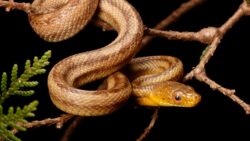Summer in Tallahassee brings warm weather, sunny days, and, unfortunately for some, snakes. With the increase in temperature and rainfall, snake activity peaks, catching even the most vigilant homeowners by surprise. While snakes play a crucial role in the ecosystem, encountering one on your property can be unsettling. Don’t worry, though—with the right knowledge, you can stay protected, snake-smart, and prepared this summer. Here’s your guide to understanding summer snake activity, identifying Florida’s common species, and protecting your home and family.
Summer Snake Activity: A Guide
Why Snake Sightings Increase in Summer
It’s not your imagination. You’re more likely to spot snakes during warmer months in Tallahassee, and here’s why:
- Weather Conditions Are Perfect for Activity
Snakes thrive in warm, moist environments, which makes North Florida summers ideal for them. Rainstorms provide fresh water, while heat keeps their cold-blooded bodies active and mobile. - Searching for Food and Shelter
During summer, snakes are busy looking for their next meal (think rodents, birds, and insects). They may also move to find cooler, shady areas as temperatures climb. - Common Hiding Spots Around Homes
Snakes are excellent at seeking shelter in nooks and crannies. Around homes, you might find them hiding in woodpiles, gardens, tall grass, under decks, or even in crawl spaces.
By understanding what draws snakes out, you can be more mindful of their habits and reduce the chances of an unwanted encounter.
Venomous vs. Non-Venomous Snakes in Florida
The good news? Not every snake you see is dangerous. While Florida is home to several venomous species, the vast majority of snakes are harmless and even helpful. Here’s what you need to know to tell them apart:
Common Venomous Snakes in North Florida
Quick identifiers for venomous snakes:
- Eastern Diamondback Rattlesnake: Known for its diamond-shaped patterns and a warning rattle when threatened.
- Cottonmouth (Water Moccasin): Black to dark brown with a white “cotton” mouth interior when it opens wide. Often found near water.
- Coral Snake: Bright, colorful bands of red, yellow, and black. Remember the saying, “Red touches yellow, will hurt a fellow. Red touches black, venom lack.”
Non-Venomous Snakes
Helpful and harmless snakes are often mistaken for dangerous ones. For instance:
- Black Racers: Sleek, shiny black snakes that are fast movers and excellent for rodent control.
- Yellow Rat Snakes: Pale yellow and black striped, these snakes help keep pest populations down.
- Garter Snakes: Small, harmless snakes with stripes down their bodies.
Remember, not all snakes are bad news! Many actually play a critical role in managing pests like rodents and insects.
What to Do If You Spot a Snake on Your Property
Spotting a snake doesn’t mean panic—it just means being cautious and taking the right steps. Here’s what to do:
- Stay Calm
Snakes don’t seek out conflict. They’re more likely to slither away than to engage. Move away slowly and avoid sudden movements. - Keep Your Distance
Never approach, touch, or attempt to handle a snake—even if you think it’s non-venomous. - Remove Pets and Children
Immediately get kids and pets away from the area to reduce the chance of accidental encounters. - Contact a Professional
If the snake stays put, contact a wildlife control expert or a pest control professional to remove it. Attempting to move a snake on your own is dangerous and unnecessary.
How to Prevent Snakes From Entering Your Yard or Home
The best way to avoid snake encounters is by making your property less appealing to them. A few simple maintenance steps go a long way:
- Mow Your Lawn Regularly
Snakes prefer tall grass and dense vegetation, so keeping your lawn trimmed reduces their hiding spots. - Remove Debris and Clutter
Clear out piles of wood, rocks, or leaves. These areas are prime real estate for snakes looking for shelter. - Seal Entry Points
Walk around your home’s exterior and look for cracks, holes, or gaps in your foundation, doors, and windows. Use caulk or weather stripping to seal them up. - Minimize Food Sources
Snakes follow their prey, so reducing rodent activity can help. Keep pet food stored securely and close garbage bins tightly.
By maintaining a well-kept yard and eliminating easy access to shelter and food, you can discourage snakes from visiting your property.
Stay Aware of Snake Activity This Summer
Tallahassee’s snake activity may spike in the summer, but there’s no need to live in fear. With these tips, you’re well-prepared to identify, avoid, and manage snake encounters responsibly. Snakes play an important role in Florida’s ecosystem, and with a little awareness, you can coexist without worry.
Remember, prevention is key, and professional help is just a phone call away if you need it. Stay calm, stay informed, and enjoy your summer with peace of mind knowing you’re snake-smart!


